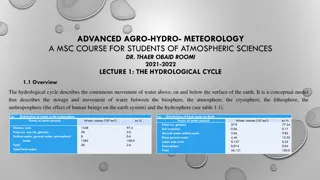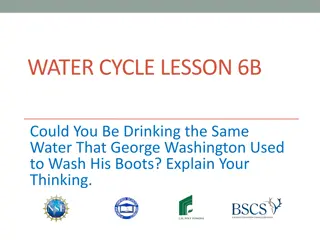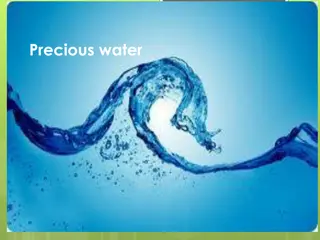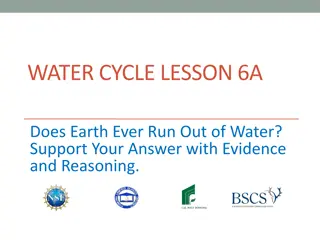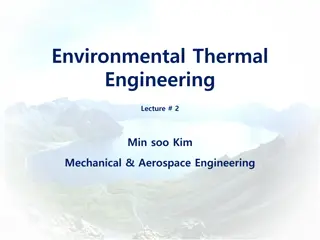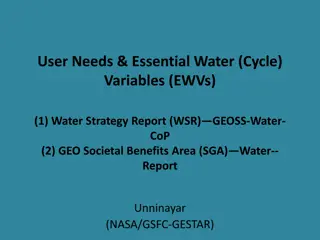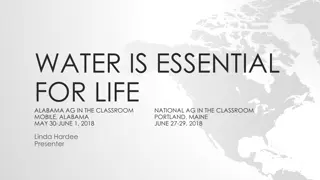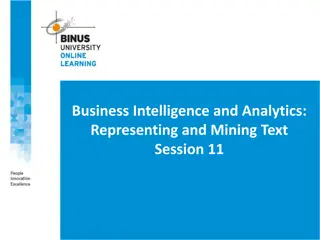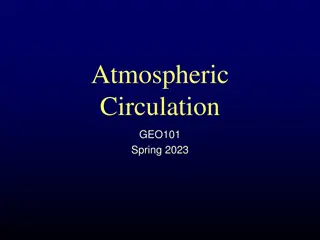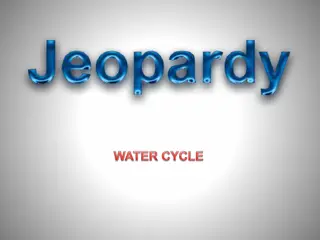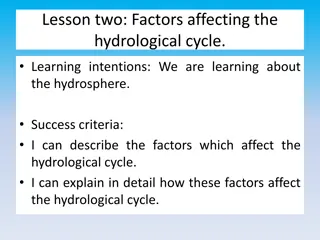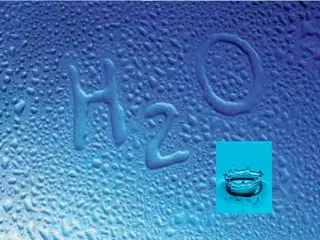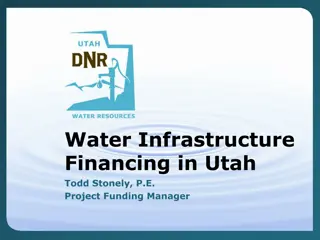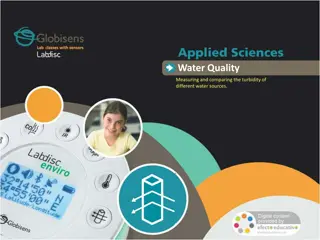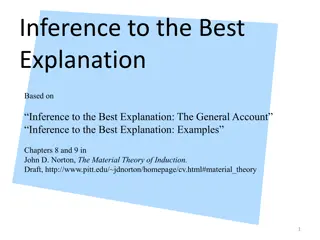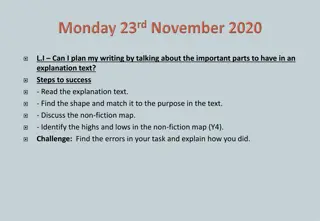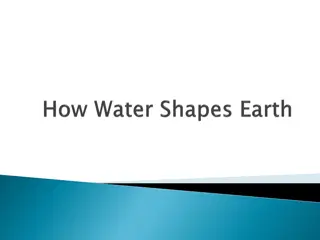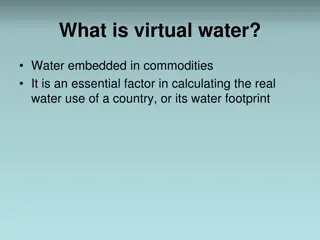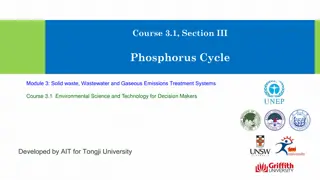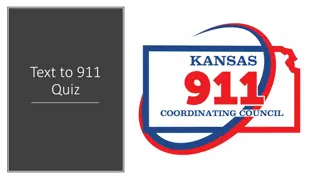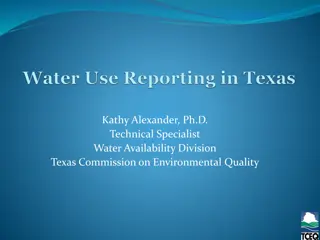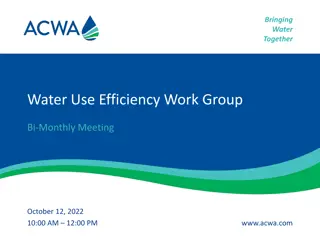Understanding the Water Cycle: An Explanation Text
The explanation text discusses the water cycle, also known as the hydrological cycle, detailing the stages of evaporation, condensation, precipitation, and transpiration. It explains how water molecules transform from liquid to vapor and back due to the sun's heat and gravity. The importance of water for sustaining life is emphasized in the text.
Download Presentation

Please find below an Image/Link to download the presentation.
The content on the website is provided AS IS for your information and personal use only. It may not be sold, licensed, or shared on other websites without obtaining consent from the author. Download presentation by click this link. If you encounter any issues during the download, it is possible that the publisher has removed the file from their server.
E N D
Presentation Transcript
L.O: identify the features of an explanation text
Watch the video using the link below https://www.youtube.com/watch?v=Xc5eqwzEgUo
62 West Wallaby Street Wigan Lancashire England WG7 7FU Read the letter from Wallace. His inventions have been stolen and he needs you to design some new inventions and explain how they work. By Heck Year 5! We ve had a major catastrophe down at the workshop! Let me tell you what s happened I was in my living room a week ago, enjoying a nice cuppa tea and some cheese and crackers, when I heard a strange noise coming from downstairs in the basement. We are going to be investigating explanation texts and using what we have learned to write our own. Now, usually it s me that s making strange noises in the basement as I bring my ideas to life and put my inventions together. I thought it might have been Gromit, you know, because sometimes he s a bit clumsy. But wouldn t you know it, the mutt walked in just as I was about to shout for him! Then I realised! Someone was down there! We rushed down there, but were too late! Someone had stolen all of my ideas! All my blueprints, all my explanations of how my machines work, gone! This is why I m writing to you, Year 5. I need some new invention s. I need some help getting going again! I want you to draw plans and write explanations of your best machines possible. I ve asked your teachers to help you out, because I need your drawings and writing to be as clear and understandable as possible, so that I can get building again! And don t forget, I m only going to make the interesting ones! My invention show is in four weeks, and I need these explanations of how to build your machines! I hope you can help, Year 5? Wallace
Have a read through the explanation texts on the next three slides. Your task today is to read through these explanation texts and identify what you think make them: a) A non-fiction text b) An explanation text.
The water cycle The water cycle is also known as the hydrological cycle. There is the same amount of water on the Earth now as there was when the Earth began. The water cycle is how the earth's water recycles itself. The cycle includes precipitation, evaporation, condensation, and transpiration. Earth's water keeps changing from liquid water to vapour and then back again. This cycle happens because of the sun's heat and gravity. How does the Water Cycle work? 1. First of all, water molecules from lakes, rivers, streams, reservoirs, and the sea get heated up by the sun and then turn into vapour that rises into the air. 2. Next, these water molecules form into clouds, this is because a process called condensation occurs. 3. When the air and the water cool, they form drops of water which then fall to the earth as rain. If they are frozen, they become snow or sleet. 4. Once the water reaches the ground, it can flow across the land until it reaches rivers, lakes, streams, or the sea. It can also sink into the ground and flow because of gravity through gaps in rock, gravel and sand. Because of this, it reaches these bodies of water too. 5. Now the cycle begins again, when water is evaporated once more. Why is water important? Many of us think water will always be there for us when we want it. Without water, living things would die. You will die if you go without water for more than a week. Plants will die without water and that would kill all of the animals that eat the plants.
How to Fly a Hot Air Balloon A hot air balloon consists of a basket, four big gas tanks, a burner and the balloon or envelope . First, the pilot puts four nylon poles into sockets on top of the basket. Then she puts the burner on top of the poles. Next, she connects the cables to the burner frame. The cables also go under the basket in order to hold everything together. After this, she connects the hoses from the full gas tanks to the burner so that she can test it. Next, two people hold the mouth of the balloon open while it is filled with cold air from the fan until it is quite fat and tight. Now for the difficult bit. The pilot lies on the ground, half in the basket. She turns on the gas burner and points the flame into the mouth of the balloon. This is so that the balloon slowly stands up. When the pilot is ready to go, she heats up the air in the balloon a bit more. This results in the air in the balloon to be hot enough to get the balloon to rise off the ground.



